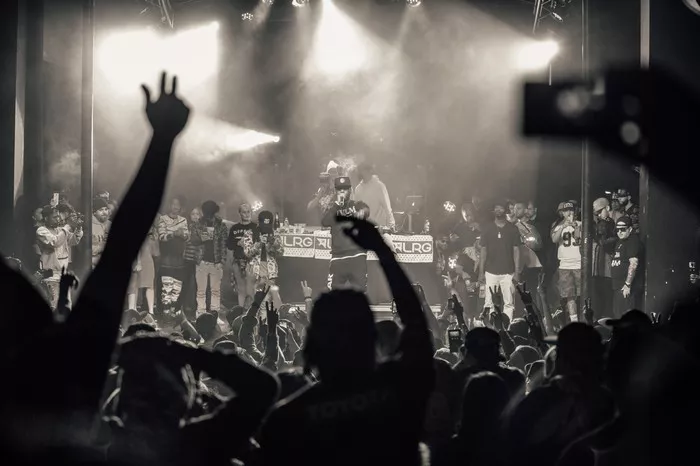Hip hop, born on the gritty streets of New York City in the 1970s, has transformed into a global cultural phenomenon. With its powerful rhythms, poetic lyrics, and dynamic dance moves, hip hop quickly gained popularity and transcended social and cultural boundaries. Over the years, the genre has evolved in significant ways, embracing new styles, technologies, and social issues. In this article, we’ll take a journey through time and explore the fascinating changes that have shaped hip hop into the influential force it is today.
1. The Birth of Hip Hop: From Bronx Blocks to Mainstream
The origins of hip hop can be traced back to the block parties of the Bronx, where DJs like Kool Herc and Grandmaster Flash used turntables and breakbeats to create innovative music. The genre initially focused on parties, dancing, and expressing local social issues. Artists like The Sugarhill Gang and Run-DMC made hip hop more accessible to a broader audience and laid the groundwork for its future expansion.
2. Golden Age: Political and Social Awareness
In the late 1980s and early 1990s, hip hop underwent a significant shift. It became a platform for artists to address pressing social and political issues. Acts like Public Enemy and N.W.A. fearlessly confronted racial inequality, police brutality, and poverty in their lyrics. This era also witnessed the rise of conscious hip hop, with artists like A Tribe Called Quest and De La Soul promoting positivity and introspection.
3. Commercial Success and Glamorization
As hip hop entered the mid-1990s, it gained massive commercial success. The emergence of superstars like Tupac Shakur and The Notorious B.I.G. brought hip hop into the mainstream, attracting a vast and diverse fan base. However, with commercialization came concerns about the glamorization of violence, materialism, and sexism, leading to debates about the genre’s impact on society.
4. The New Millennium: Globalization and Fusion
The turn of the millennium marked an era of globalization for hip hop. Artists from various countries started incorporating their cultural influences into the genre, giving rise to sub-genres like British grime, Afrobeat, and K-pop hip hop. This fusion not only expanded the music’s horizons but also allowed hip hop to become a universal language, uniting people worldwide.
5. Digital Age and Online Presence
With the advent of the internet and social media, hip hop artists found new avenues for exposure. Platforms like YouTube, SoundCloud, and Instagram enabled aspiring talents to share their music without major label support. This democratization of the industry brought fresh voices to the forefront and contributed to the genre’s diverse evolution.
6. Trap Music: A Dominating Force
In the mid-2000s, trap music emerged as a dominant sub-genre within hip hop. Originating in the southern United States, trap is characterized by its heavy use of 808 drums, high hats, and dark lyrical themes. Artists like Gucci Mane, Future, and Migos gained immense popularity and heavily influenced the genre’s sound, leading to trap’s widespread integration into mainstream hip hop.
7. Streaming Era: Changing Consumption Patterns
The rise of streaming platforms such as Spotify and Apple Music revolutionized the music industry, including hip hop. Artists could now reach global audiences instantly, and consumers could access a vast catalog of songs at their fingertips. This shift altered the way hip hop was both created and consumed, as artists adapted their styles to capture listeners’ attention in a fast-paced digital landscape.
8. Social Impact: #BlackLivesMatter and Beyond
In recent years, hip hop has played a vital role in advocating for social justice. The #BlackLivesMatter movement saw many artists using their platform to address police brutality and racial injustice. Kendrick Lamar’s album “To Pimp a Butterfly” and J. Cole’s “4 Your Eyez Only” are just two examples of how hip hop artists have embraced social activism and used their music to raise awareness about pressing issues.
9. Beyond Music: Entrepreneurship and Influence
In addition to their musical endeavors, hip hop artists have become powerful entrepreneurs and influencers. Jay-Z, for instance, has built an empire that extends far beyond the realm of music, with successful ventures in fashion, sports management, and tech investments. This ability to diversify their portfolios has solidified hip hop artists’ positions as influential figures in both entertainment and business.
10. Embracing Diversity and Inclusivity
Hip hop has come a long way from its humble beginnings, and with its global reach, it has embraced diverse voices and perspectives. LGBTQ+ artists like Frank Ocean and Lil Nas X have found success within the genre, challenging traditional norms and promoting inclusivity. This widening representation continues to reshape the face of hip hop and enrich its storytelling.
Conclusion
Throughout its journey, hip hop has metamorphosed into an art form that reflects the ever-changing society it inhabits. From its origins in the Bronx to its current global dominance, hip hop has shown its adaptability and capacity to inspire and provoke change. As the genre continues to evolve, one thing remains constant: its ability to connect people, transcend boundaries, and give a voice to those who need it most. Hip hop’s future is bright, promising a continued legacy of cultural impact and musical innovation for generations to come.

